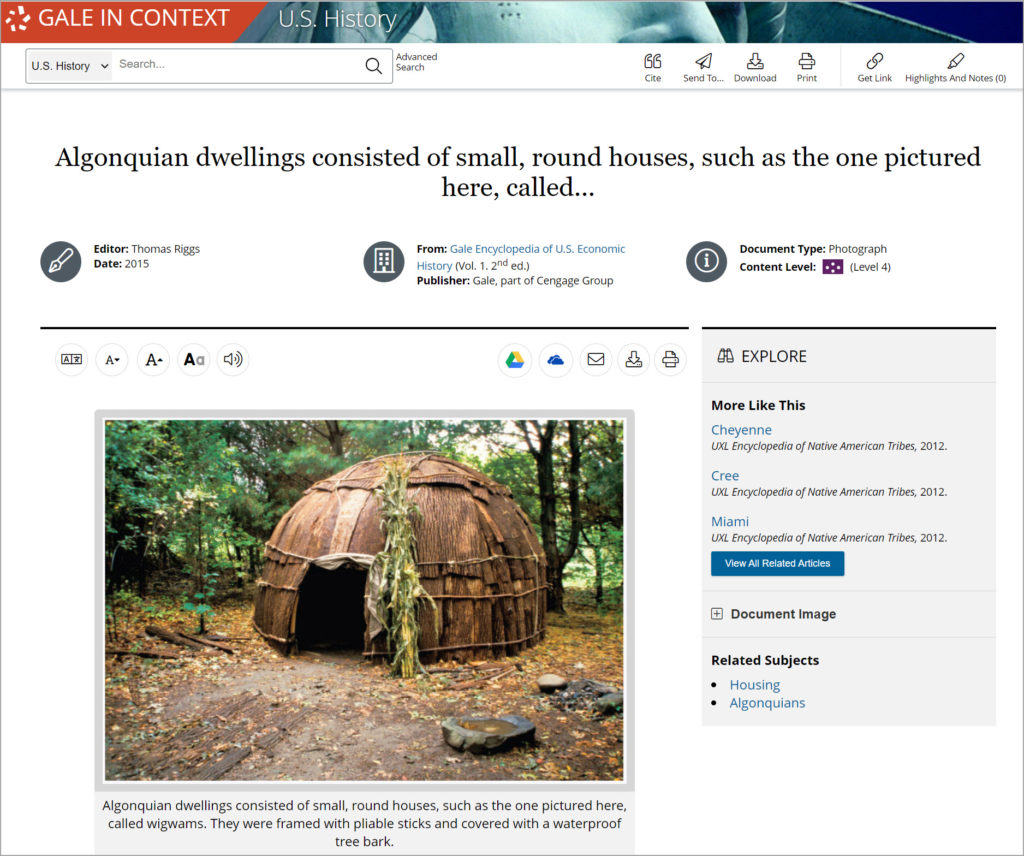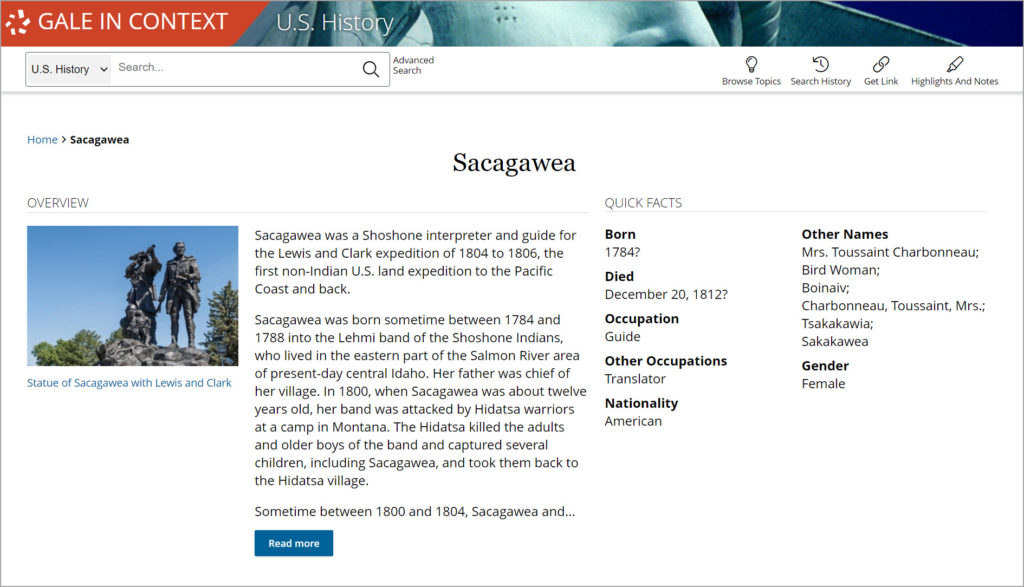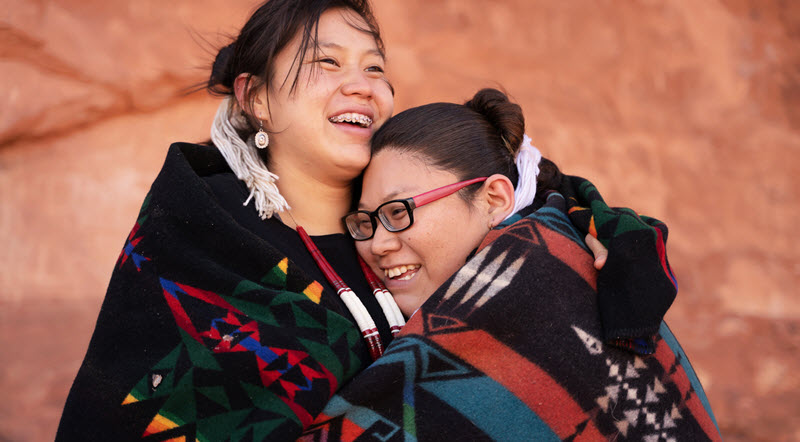| By Gale Staff |
Each November, Native American Heritage Month celebrates the rich histories and diverse cultures of Indigenous people and communities.
This year, consider how you and your students can honor and celebrate the traditions and contributions of Native Americans and Native Alaskans in a meaningful, long-lasting way.
There are many ways that you can observe Native American Heritage Month in your classroom. Here are a few ideas to help spark inspiration.
Teaching Students About Native American Heritage
Though Native Americans make up less than 3% of the total U.S. population, their history and contributions are of critical importance to the nation’s history. Sadly, much of it has been forgotten or overlooked.
As a result, there are many misconceptions and stereotypes surrounding Native American heritage, especially regarding the Thanksgiving holiday. November is an opportunity to grow our understanding of Native culture, traditions, and how historical traumas have impacted Native peoples throughout history—and still do today. As you teach your students about Native American heritage, here are a few things to keep in mind:
- Avoid using offensive terms: Many common terms used to describe Native Americans are now considered offensive. For example, the term “Indian” is used to describe people from India, not Native Americans. The preferred term is “Native American.”
- Use tribe-specific information: There are many different tribes of Native Americans with their own unique cultures. Use tribe-specific information, when possible, to introduce students to Native American culture. For example, not all Native Americans live in teepees. They live in houses, wigwams, longhouses, and even igloos.

- Include current information: Some people have the misconception that Native Americans only exist in history, but there are over five million Native Americans living in the United States today. Teach your students about modern-day Native American culture in addition to historical information.
Discuss Why We Celebrate Native American Heritage Month
Just like any other heritage month, it’s important to start by discussing why we celebrate Native American Heritage Month. What is the history behind the month? Why is it important to learn about and celebrate the culture of Native Americans?
When students understand the importance of the month, they’ll be more engaged in learning about it.
Discussion starters:
How did Native American Heritage Month begin?
Native American Heritage Month got its start as a one-day “American Indian Day” celebration in New York in May 1916, after a member of Blackfeet Nation, Red Fox James, rode on horseback from state to state to ask for a day to honor Native Americans.
How many Native American groups can you list?
Cherokee, Navajo, and Apache may be the most recognized. What about tribes in your state? Challenge students to learn about the diversity of each tribal nation.
What are some Native American traditions you’ve learned about?
Give an example.
Introduce Students to Local Native American Culture
There is so much valuable information available about tribal nations that it would be impossible to cover everything in one month. Instead, consider focusing on a specific tribe or region and go into more depth about their culture and history. It will also make it easier for students to connect and engage with the material. For example, if your school is located in the Southwest, you could choose to focus on the Navajo Nation.
Engage Learners with a Variety of Activities
When building your lesson plans, it’s important to include a variety of activities to appeal to all learning styles. By using a mix of activities, you’ll ensure that all students are actively involved in learning about Native American heritage.
Here are some activity ideas for your classes:
- Read aloud: There are several informative and engaging children’s books about Native Americans. Find one that relates to the tribe or region you’re focusing on and use it as a read-aloud.
- Art projects: Arts and crafts can be engaging for students of all ages. There are several arts and crafts projects that can be used to teach about Native American heritage like designing totem poles or dream catchers. Use art projects to introduce students to Native American symbols and their meanings.
- Biographies: Gale In Context: U.S. History contains many biographies of figures including Sacagawea, Pontiac, Hiawatha, and more. Ask middle school and high school students to learn about influential Native Americans during Native American Heritage Month.

- In the Media: Gale In Context has a variety of videos, audio clips, creative works, newspaper articles, biographies, images, and more on topics relevant to Native Americans today.
- Field trips: Many cities have museums or cultural centers with exhibits about local Native American tribes. If possible, take your students on a field trip to learn about Native American culture in a more engaging environment.
- Guest speakers: If you have any Native American friends or family members, ask them if they would speak to your class about their culture. You can also invite a local Native American tribe to give a presentation.
Connect Students to Credible Resources
In such an information-rich world, connecting students to reputable information is essential. When teaching about any cultural heritage, use a mix of age-appropriate, authoritative sources to enrich student learning.
Here are just a few resources available online that you can use to help students learn about Native American heritage:
- Gale In Context: Elementary
- Gale In Context: Middle School
- Gale In Context: High School
- Gale In Context: U.S. History
- The National Museum of the American Indian
- Smithsonian Institution
- Native American Heritage Month website
Each resource includes academic articles, videos, images, and more that can be used easily in the classroom or by students at home.
Want access to Gale resources to support your students? Find your education consultant.

